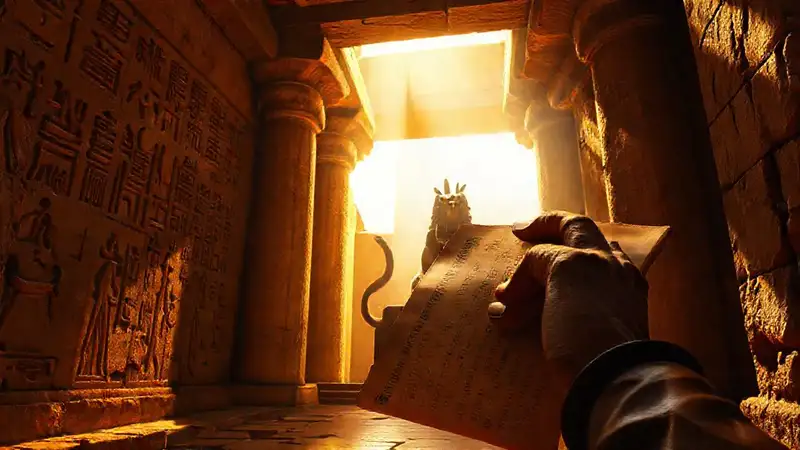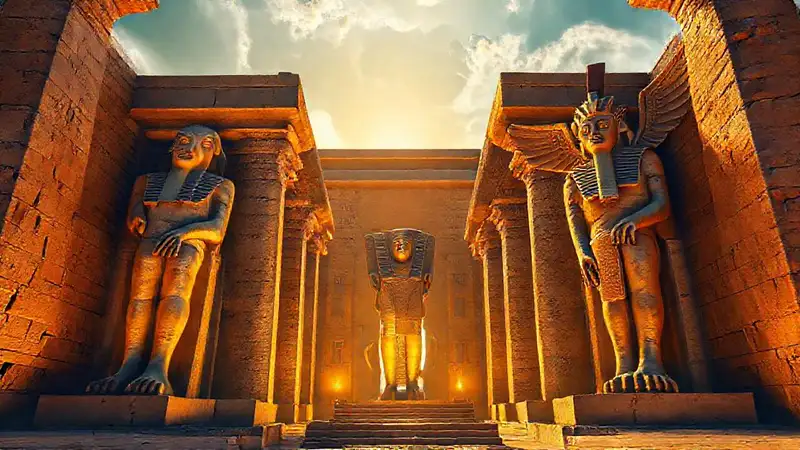What role do gods play in Egyptian mythology literature

Egyptian mythology is a vast and intricate tapestry woven with tales of powerful gods, pharaohs, and the cyclical nature of life, death, and rebirth. Its influence on Egyptian literature is undeniable, permeating everything from religious hymns and funerary texts to stories of heroism and morality. Understanding the role of these deities is essential to unlocking the deeper meanings embedded within the written works of ancient Egypt. The very landscape of Egyptian literature is shaped by the constant presence and interventions of the divine.
The gods were not simply distant figures in the heavens; they were actively involved in human affairs, represented in narratives both majestic and petty. Their stories served as explanations for natural phenomena, moral guidelines for conduct, and even justifications for the pharaoh’s power. Egyptian literature, therefore, doesn't just mention the gods; it uses them as central characters, motivators, and embodiments of universal themes, creating a uniquely layered and compelling literary tradition.
## The Creation Myths and the Divine Order (Ma'at)
Egyptian creation myths, most famously the Heliopolitan and Hermopolitan versions, are fundamental to understanding the role of the gods in literature. These narratives detail how the world emerged from the primordial chaos, Nun, and how specific gods played crucial roles in bringing order out of disorder. The actions of Atum, Shu, and Tefnut in the Heliopolitan myth establish the initial cosmic structure, and are frequently referenced in later literature as a grounding narrative. The importance of these myths isn’t just about the origin story; it’s about establishing the divine hierarchy and the principles that govern the universe.
The concept of Ma'at, representing truth, justice, and cosmic order, is intrinsically linked to the gods. It’s not merely a philosophical concept; it’s a divine force upheld and enforced by deities like Ma'at herself, the goddess of truth. Literature consistently portrays the struggle to maintain Ma'at against forces of chaos, represented by the serpent Apophis. This constant battle provides a framework for understanding morality and consequence in Egyptian literature, demonstrating the importance of divine approval.
Stories highlighting the consequences of disrupting Ma'at are common. The myth of Osiris's murder by Set and his subsequent resurrection exemplifies the ongoing tension between order and chaos, and the eventual triumph of the former. This core narrative, richly explored in funerary texts and later in dramatic performances, emphasizes the responsibility of both gods and mortals to uphold cosmic balance.
## The Role of Osiris, Isis, and Horus in Heroic Literature
The myth of Osiris, Isis, and Horus is arguably the most influential and widely adapted in Egyptian literature. Osiris's murder and resurrection formed the backbone of funerary beliefs and provided a powerful model for the deceased's journey through the underworld. The story is rife with themes of betrayal, grief, magic, and ultimate victory, making it ripe for literary exploration. It's not just about the afterlife; it's a heroic narrative about overcoming adversity.
Isis's devotion to Osiris and her tireless efforts to resurrect him demonstrate the power of love, resilience, and magical knowledge. Her role is pivotal in Egyptian literature, often presented as the ultimate protector and nurturer, a figure of immense strength and wisdom. Stories centering on Isis often emphasize the importance of feminine power and divine intervention in mortal affairs.
Horus’s eventual triumph over Set, reclaiming his rightful inheritance, serves as a powerful metaphor for the restoration of order and the legitimacy of the pharaoh's rule. This is a recurring motif in literature, linking the pharaoh’s divine right to rule directly to the Horus myth. The battles between Horus and Set were even depicted in elaborate temple reliefs, reinforcing the visual and literary connection between the god and the ruling dynasty.
## The Pantheon and Their Relationships: Shaping Human Interaction

The vast Egyptian pantheon, with its numerous gods and goddesses, each possessing distinct attributes and roles, significantly impacted how humans interacted with the divine and was reflected in literature. The relationship between deities, often complex and fraught with jealousy or cooperation, mirrored human relationships and provided fodder for literary narratives. The sheer diversity of the deities offered countless opportunities for storytelling.
The portrayal of relationships between gods, like the familial bond between Ra and his children, or the rivalry between Horus and Set, provided allegories for human behavior. Hymns and prayers dedicated to specific gods often described their personalities, powers, and preferred offerings, shaping the perception of the divine and guiding religious practice. These personalized interactions influenced the types of literature created and the purpose of those literary works.
Furthermore, the syncretism of deities – the merging of different gods into single, composite forms – created even more complex narratives. For example, the merging of Ra and Horus into Ra-Horakhty illustrates how Egyptian literature adapted to evolving religious beliefs, creating new literary motifs and further enriching the mythological landscape. Examining these blended identities provides a key insight into Egyptian religious and literary thought.
## Funerary Texts and the Journey to the Afterlife
Funerary texts, like the Book of the Dead, the Pyramid Texts, and the Coffin Texts, are perhaps the most extensive and influential body of literature directly influenced by Egyptian mythology. These texts served as guides for the deceased's journey through the underworld, providing spells, prayers, and instructions to navigate the dangerous trials awaiting them. They reveal a deep belief in the afterlife and its inextricable link to the actions and relationships of the gods in life.
The weighing of the heart ceremony, depicted vividly in many funerary texts, showcases the judgment of Osiris and the role of the gods in determining a soul's fate. The presence of deities like Anubis and Thoth in this crucial moment underscores the importance of divine judgment and the need to live a virtuous life according to Ma'at. This recurring scene has inspired countless literary interpretations, often focusing on the themes of accountability and moral responsibility.
The illustrations accompanying these texts, often depicting gods, goddesses, and mythical creatures, further enriched the literary experience. These visual elements provided a powerful interpretive layer, visually representing the divine world and guiding the deceased's understanding of their journey. The integration of image and text was a crucial element of Egyptian funerary literature.
## Conclusion
The mythology of ancient Egypt was not just a set of stories; it was a fundamental framework for understanding the world, morality, and the human condition. The gods permeated Egyptian literature, serving as central characters, symbolic representations of abstract concepts, and justifications for societal structures. Their actions, relationships, and interventions shaped narratives across various literary forms, providing a unique and deeply layered literary heritage.
Ultimately, analyzing the role of the gods in Egyptian mythology literature reveals the interwoven nature of religion, power, and storytelling in ancient Egyptian culture. From the creation myths to the funerary texts, the divine presence shaped every aspect of the literary landscape, ensuring that the voices of the gods would continue to resonate throughout the centuries. The richness of this legacy continues to inspire scholars and artists today.
Deja una respuesta